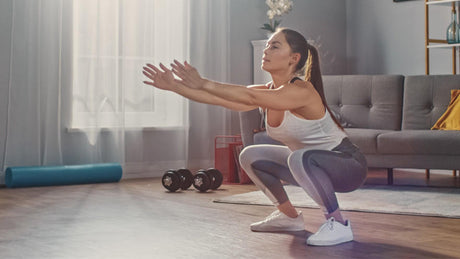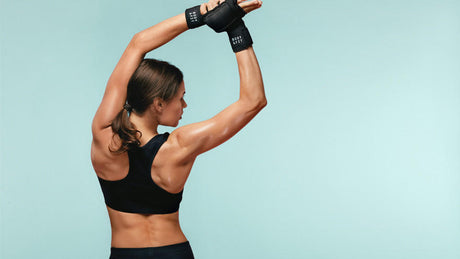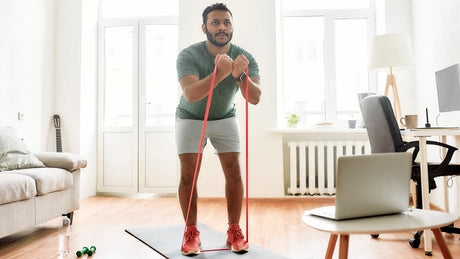The deadlift is one of the best exercises to quickly put on muscle mass, but because it’s considered susceptible to injury, it’s often skipped. We’re going to explain how you can perform it without fear of injuries to reach your goal faster, whether that’s gaining muscle mass or losing weight.
WHY?
The deadlift is a compound exercise, meaning you target multiple muscle groups when performing it. The hamstrings, glutes, abdominal muscles and erector spinae (back stretcher) in particular are engaged, but so are the quadriceps, calf muscles, biceps and trapezius. Another benefit is you burn a lot of calories because almost the entire body cooperates with the lift. It also triggers the release of the growth hormone, which plays an important role in adding muscle mass and weight loss.
HOW?
1. Stand in front of the barbell and with feet hip-width apart. Keep your back straight and bend your knees until your thighs are almost horizontal (90 degrees).
2. Place the barbell over the centre of your feet. Grab the barbell shoulder-width apart with both hands in a pronounced position. This means that the inside of your wrist is pointing down.
3. Inhale and lift the barbell by stretching your legs. Keep the back straight. Tighten the abs and glutes well and hold your breath during the lift.
4. When the barbell is at knee height, lift the upper body by pressing your hips forward and straighten the legs.
5. Hold this pose briefly and return to the starting position using the reverse order. It’s important to keep your back straight.
When you train too hard, your back will bulge. This is the main cause of injury so avoid it at all times.
WHEN?
Since the deadlift engages both the back and the leg muscles, it fits in with leg and back training. However, it’s important to get enough rest between sessions. If you deadlift shortly after a leg workout (or vice versa) your body can’t recover quickly enough and there’s a risk of overload. A rest period of 48 hours to 72 hours is usually enough to allow the trained muscle groups to recover.
GRIP VARIATIONS:
When your grip fails you can opt for the alternating grip. This means that you keep one hand pronounced, with the wrist pointing inwards and the other hand supinated, with the wrist outwards.
You can also opt for the Hook grip. Normally you put the thumb over the fingers but with the Hook grip you place the thumb under the fingers. Both variations prevent the barbell rolling in your hands.
DEADLIFT VARIATIONS:
The Sumo variant involves placing the feet wider than hip width and hands no wider than shoulder width. With this variant you put more emphasis on the adductors and hamstrings. You can perform the Sumo deadlift relatively hard because of the shortened range of motion, but keep the back straight.
The Romanian deadlift or Stiff-legged Deadlift differs in that you do not make any movement in your legs. Keep knees slightly bent from start to finish; this puts more emphasis on the hamstrings. To avoid too much pressure on the lower back, it’s best to perform this variant relatively light.



